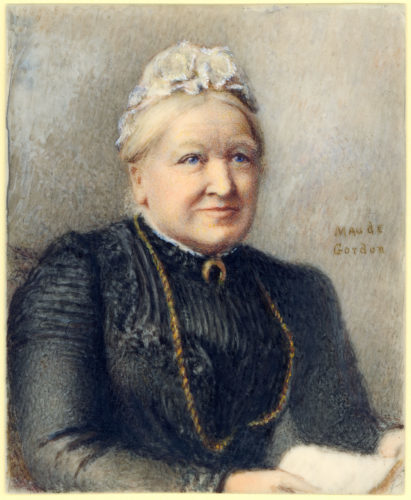In her introduction to the Griffith Review volume “State of Hope”, Julianne Schultz writes of South Australia as “born of reform”,[1] and with “hope in its DNA”.[2] While Schultz notes an equally prominent history of conservatism and complacency, her characterisation of South Australia as reformist is one that echoes with how the state is often understood, both by South Australians and those outside the state.
As someone who teaches and researches the foundations of our legal system and how we represent law in non-legal texts like novels, I’m interested in the ways that, as South Australians, we talk about our state’s progressive origins and history of legal change.
Whatever we might feel about the speed of change or its current manifestations, there is often a recourse to ideas of reform and idealism in discussions of South Australia’s history, including of women’s suffrage. These discussions started me thinking about another way of conceiving of change, the utopia.
Utopias are compound things. The pun in Thomas More’s original Utopia is of both a “good place” and “no place,” and the literary utopia sits in this complex space somewhere between imaginative fiction, philosophy, and political manifesto. Western utopias have a number of forms: some are blueprints of a society that has already achieved perfection, others are presented as works in process. Many are authoritarian, making them seem as much dystopian as utopian to readers, depending on their nature and your political stance. And they occur in a variety of places, including islands and isolated or “lost” settlements, or, as the world became increasingly mapped by Europeans in the nineteenth century, on alternate earths and in the future.
Catherine Helen Spence’s serially published utopia A Week in the Future (1888-1889) sits in the latter category.[3] It came at the end of a long, although she felt somewhat unsuccessful, literary career for Spence. It also wasn’t her first utopian work: an earlier novel, Handfasted, which features the lost Scottish colony of Columba, located somewhere in Central America, had been submitted for a newspaper prize. However, its vision of communal living and trial marriages was deemed, as Spence puts it in her Autobiography, “too socialistic, and consequently dangerous”.[4]

Catherine Helen Spence, Watercolour on ivory, artist: Maude Gordon, c1910, courtesy State Library of SA, B11192
A Week in the Future begins in Adelaide in 1888. Rather than two years of the quiet and frustratingly coddled life of an invalid, Emily Bethel, with the assistance of a potion provided by her doctor, chooses instead to live for only a week longer, but a hundred years in the future (and, for good measure, is transported to London for the experience). Over the following week Bethel explores aspects of this new, utopian society, including its economics, laws, social practices, and arts.
The London she finds is organised around a collective lifestyle based on the “scientific meliorism” of Jane Hume Clapperton, which stressed the possibility of “changing the moral nature of society through a scientific knowledge of heredity, education and environment”.[5] The population lives in cooperative “Associated” housing and works fewer hours, and while they earn less, significant inequalities in wealth have been abolished. The novel notes a decline in Britain’s global influence alongside a growth of that of its former colonies and the relative luxury of life in Australia,[6] even as Spence perhaps reinforces Britain’s ongoing importance by turning to London from which to survey her new, ideal world.
Women in Spence’s utopia seem to have equality, at least in employment, birth control, and family law. Equal access to the occupations appears to have been achieved, with women’s roles not exclusively defined by child birth and child care, and divorce is more easily obtained than in 1888. While there is discussion of politics and law-making, though, Spence does not mention women’s suffrage; the novel is equally silent on women’s representation in parliament and in other political roles. It has been noted that Spence came later to suffrage activism,[7] and she writes of herself as supportive, but more interested in other aspects of electoral reform, [8] especially proportional representation. Despite suffrage activism before and at the time of the novel’s publication, its absence might thus be an implicit reinforcement by Spence of the status quo.
However, the absence of a discussion about women’s enfranchisement might also be understood in the context of Spence’s utopia as a form of aspirational social imagining; the possibility that a reader might read into these silences in the novel that women already are enfranchised. Just as many of the reforms that have led to the utopia of A Week in the Future go undescribed, so too might universal suffrage have come to pass, and be so quotidian now that it does not warrant comment. This, then, might be one way to conceive of political reform through the utopian literary form: as demonstrating its uncontested, and uncontentious, reality.
Such absences should not be read without caution, however. As Ljungdahl notes, A Week in the Future’s brevity “effectively prevents lengthy explanations so that most issues are discussed in a perfunctory fashion; analysis is necessarily somewhat superficial (and often absent altogether)”.[9] There are also a number of disturbing aspects to Spence’s utopia. Australia’s Indigenous peoples are absent from any discussion of the nation’s future. Protectionist trade policies have racist justifications and the population puts xenophobic constraints on employment opportunity. The availability of birth control is coupled with regulations for population control – three children per family in Europe, four in America and Australia – and these further form part of eugenic social norms legitimating the infanticide of children with a disability.
Such silences, exclusions, and marginalisation are not unique to Spence’s utopia, and speak to the difficulty of reading utopias. This is the contradiction More underscored with the name utopia: simultaneously perfect and unrealisable. The impossibility in achieving an ideal society may be seen in its exclusory and violent ways of imagining a new world. It may also be seen in elisions; when a utopia is presented as a blueprint, the process of creating it and the justification for doing so are often glossed, going unmentioned and unchallenged in the text. Reading utopias and how they represent, or fail to represent, legal and political changes such as women’s suffrage, then, can be as much a navigation of how a utopia came to be as of its ideal form. Just as when we remember our histories of legal and political reform and change, imagining an aspirational, utopian future inspires us not simply to an end, but to think and rethink the means of achieving it.
[1] Julianne Shultz. “Born of Reform: Holding Faith in Hope.” Griffith Review 55 (2071) 7, 7.
[2] Ibid 9.
[3] Catherine Helen Spence. A Week in the Future. Introduction and notes by Lesley Durrell Ljungdahl (Hale and Iremonger, 1987). A Week in the Future was first published serially in Sydney’s The Centennial Magazine between 1888 and 1889.
[4] Catherine Helen Spence. Autobiography. In Catherine Helen Spence, edited and with an introduction by Helen Jones (University of Queensland Press, 1987) 456. Handfasted was not published until 1984.
[5] Lesley Durrell Ljungdahl. “Prologue.” In Catherine Helen Spence, A Week in the Future. Introduction and notes by Lesley Durrell Ljungdahl (Hale and Iremonger, 1987). 12.
[6] Spence, A Week in the Future, 57.
[7] Helen Jones. Nothing Seemed Impossible: Women’s Education and Social Change in South Australia 1875-1915 (University of Queensland Press 1985). 140.
[8] Spence, Autobiography, 463-4.
[9] Ljungdahl, “Prologue”, 12.





